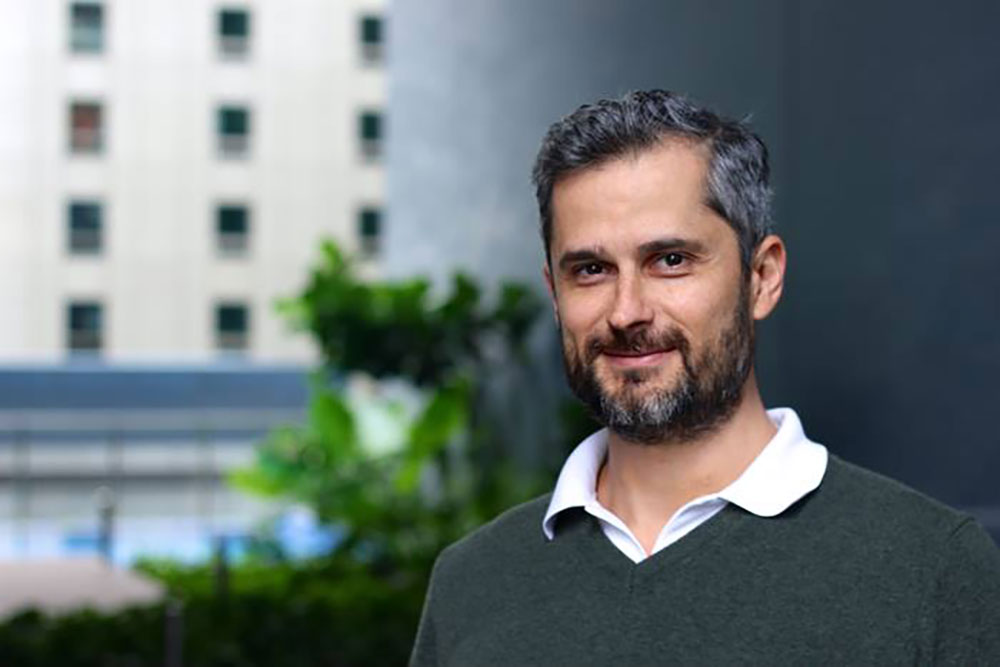Space invaders at a carpark near you
In our series about Singapore Design Week 2019, Pamela Ho talks to LOPELAB’s Lorenzo Petrillo about the Singapore Urban Design Festival or #UDFSG and why he wants to reclaim public spaces for people.

He zips around Singapore on his little Vespa, and since moving here in 2010, has explored almost every corner of the island. “I’ve always been interested – even in Italy, where I come from – in exploring the city, trying to enter abandoned buildings and going all the way to the rooftop,” says Lorenzo Petrillo, founder and director of LOPELAB, a design consultancy agency. “If I find a door open, it’s like ‘ok, it’s not forbidden’ so I’m going up. It’s always nice to see the city from a different perspective.”
That was, in fact, how he discovered a quiet, underused part of a carpark in Jalan Besar almost three years ago. He was checking out a café in the area and was smitten by the mix of hipster cafés and hardware shops in the old neighbourhood. There, he spotted the multistorey carpark and scootered all the way up on his Vespa to explore.
What he found was an open-air rooftop with a view; the floor below was sheltered and breezy, even without air-conditioning. “The space was huge and located in a hipster area dotted with hardware shops, design studios and a sports centre, and I just fell in love with the rooftop! That was when I started thinking about doing something in this space.”

We need to re-design our cities – using technology, of course, but in a more human-centric way – to inspire socialisation.
Urban Cardiology
The Jalan Besar Sports Centre multistorey carpark is now the venue of the 2019 (and sophomore) edition of the Singapore Urban Design Festival (#UDFSG), a placemaking festival conceptualised by LOPELAB to champion sustainable urban development. #UDFSG is part of the 2019 Singapore Design Week. More than a novel location, the venue choice stemmed from the urge to reclaim public spaces – something close to Petrillo’s heart.
“I started this in Italy a long time ago because of an internship,” shares Petrillo, who studied interior design and in 2004, joined esterni, an agency that develops cultural projects for public spaces. “This group of crazy people had a goal of improving my city, Milan, and its public spaces – not only from the design aspect, but also in terms of bringing the community together.”
His first project involved orchestrating a takeover of carparks in city centres and transforming them into Hammock Parks, where people could gather and interact over music and BBQs. “The message was simple: This is a space occupied by cars, they’re doing nothing there, why don’t we transform it by bringing in structures and programmes for people? It touched my heart – probably because it was my first project, and it was so beautiful and so successful – and I’ve just continued on that path.”

In a TEDx Talk he delivered in 2016, Petrillo raised the point about how gathering places like the piazza in Italy or the agora in Ancient Greece were once the heart of a city. People gathered for artistic, commercial or spiritual reasons. But a paradigm shift in the way cities were designed took place in 1933 with the Charter of Athens, a document published after the IV International Congress of Modern Architecture.
“Since the 1930s, when Modernist architects in Europe proposed a model to integrate the automobile – the most disruptive technology at the time – into the urban context, cities have been designed in the same way. Today, almost a century later, we’re in a completely different scenario and the model has lost meaning,” says Petrillo, referring to the current context of hyper-digital lifestyles which can lead to social alienation.
He elaborates. “As such, we need to re-design our cities – using technology, of course, but in a more human-centric way – to inspire socialisation.”
By Design
As a UNESCO Creative City of Design, Singapore is casting an eye to the future and creating platforms for collaboration with other cities, to explore how we can better design cities for the future – cities that are people-centric, sustainable and loveable.
The three-day #UDFSG will see companies focused on sustainability such as Pomeroy Studios, Arup and Miniwiz presenting at the festival. With talks, panel discussions and round-table sessions targeted at professionals, and free exhibitions, workshops and even a rooftop roller disco rink attracting the general public, Petrillo hopes the festival will inspire people to think about how they can be involved in the reimagining of future cities.

“While it will be fun, I hope people will also come to learn and get an idea of what we’re discussing,” he says. “I hope their experience will spark new conversations because when you start talking about it – with family and friends – the ideas and solutions will come.”






